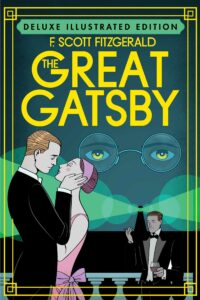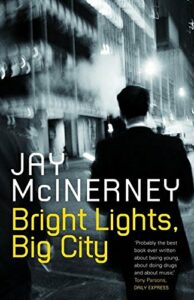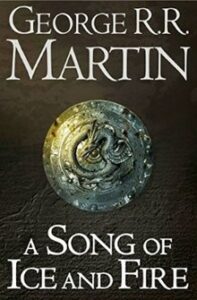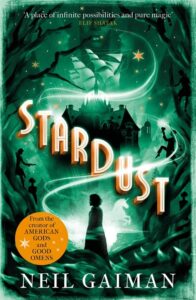
Every author is searching for a definitive answer to the question, which type of point of view (POV) makes the most riveting story for readers.
Are you struggling with the complexities of point of view characters in your manuscript?
If so, I am here to help with ideas to create gripping stories and compelling characters.
Whatever stage you are in with your manuscript, whether you have a fully written draft, have a plan or have a great story inside your head and it has to come out, sooner or later you will need to decide on whose voice will relate the events to your readers.
What Is Point of View in Writing?
At its most basic, point of view refers to who is telling the story.
Whether it is a character or a narrator, the reader hears the story through the voice you choose.
Why is the voice of your story (in other words, the type of point of view you choose) so important?
It is the POV that draws your readers into your story and builds their trust and engagement.
Who do you want to have control of your story?
The point of view character has control, and that’s why you might change your decision about the type of point of view you use when editing. Maybe the story is more compelling when you:
- Only see through one character’s eyes, or
- Two character’s eyes, or
- If you keep cards close to your chest through a close third person, or;
- Let the reader into the story through an omniscient narrator, who may have a distinctive voice in the story and offer opinion or comment on the other character’s decisions.

First, let’s look at each type of point of view and the impact they have on your reader and your story.
Later, we’ll explore how to find your story’s most effective narrative viewpoint with an eye on plot and character development.
Let’s imagine you’ve just had an argument with your best friend.
You each write the story of what happened.
Are they the same?
No. Why?
We each filter the world through our own eyes.
Whether jaded or rose-colored or a kaleidoscope, our experiences, background and beliefs are only a few things that color the way we see and interpret the world. Even how we want to be seen by others can change the way we communicate.
Let’s look back at those first three sentences for a short-hand check of POV by looking at the pronouns:
What Are the Point of View Types?
There are three basic point of view types:
- First person = I
- Second person = You
- Third person = He, she, they, it
So, you might be able to tell the POV within one sentence.
Check out the three sentences at the start of this article. I’ve written each in a different type of point of view. Did you find that strange? Shifting POV is a powerful tool and needs to be used much more sparingly and wisely than I did in the first paragraph!
First Person Point of View
First person POV keeps you inside one person’s head and uses “I” as the pronoun.
From this POV, your reader experiences the world as the character, which creates a strong bond to the character and limits what the reader can know about other characters and events.
It can be interesting to think about whether this person is a reliable narrator and what we don’t know because of the limits inherent in this point of view.
Well-known examples include Nick from The Great Gatsby by F. Scott Fitzgerald and Ishmael from Moby Dick by Herman Melville.

Second Person Point of View
Second person POV is a rare choice in fiction, because using “you” as the main pronoun can both directly engage or irritate the reader.
The first book I read with a second person narrator was Bright Lights, Big City by Jay McInerney. I was drawn into the story by the intellectual challenge of the second person narration, but struggled connecting with the character’s obsession and destructive behavior.
The book is a brilliant examination of a challenging protagonist and McInerney’s choice forced me, as a reader, to be complicit in all his actions.

Third Person Limited Point of View
Third person close POV limits the narrator’s insight within a character while maintaining third person pronouns.
This has the advantage of building a connection with the character and limiting the reader’s access to information while maintaining some narrative distance. This is a wonderful choice to help you balance character and action.
Famous examples include Fahrenheit 451 by Ray Bradbury and A Game of Thrones (A Song of Ice and Fire No 1) by George R.R. Martin.

Third Person Omniscient Point of View
Third person omniscient POV is the all-seeing, all-knowing narrator. The advantage of this POV is clear!
Your narrator can drop into any character’s thoughts at any time and is aware of everything happening. Your narrator will become like a character with a clear voice, whether opinionated or objective.
Although this POV is becoming less prevalent in modern writing, it can be seen in novels like Stardust by Neil Gaiman and Dune by Frank Herbert, and—of course—Pride and Prejudice by Jane Austen.

How to Choose POVs in Writing
First, think about what will work best for your story and your readers. This is a big question: who will be in control of your story?
Will you use POV to:
- Build tension and suspense? POV strategy can help you limit what the reader knows and reveal key information slowly for maximum impact.
- Create an unreliable narrator? An unreliable narrator can allow you to add a dramatic twist. It can also cause the reader to rethink the story to draw their own conclusions, and sometimes even look at the world differently.
- Create irony? When the reader knows more than the narrator, the result can be humorous or tragic. If the reader sees how absurd the narrator’s statements are, they may laugh. If the reader knows of impending doom but the characters do not, the foreshadowing and tension will rise.
Point of View Types Checklist
- Be sure your POV is clear at the start of your story AND at the start of every scene. Be sure to anchor your reader in POV. Read the start of each scene looking for that anchor.
- Look at the POV goal for the scene. Is this the POV with the most to lose in this scene? If not, what can you change to make this true?
- Read through the scene to look for head-hopping. Is the POV consistent throughout the scene? If not, have you done it on purpose and given the reader a clear anchor into the new POV immediately? Check out this blog for more details: Point of View: Why Head Hopping Reduces Tension
- If you are using a limited POV, read through each scene watching for information the character couldn’t know.
- If you are using limited POV, read through the scene for how the character thinks, feels and reacts to make sure it is consistent with their personality and worldview.
- Beginning writers are often recommended to stay within one POV. As you edit, watch for where you may shift and think about why you have written it that way in your draft. Look for the reason behind your decision as it may indicate a need for a different POV or a shift in presentation of plot.
- If it isn’t working, consider changing your POV strategy!

Different Types of POV Conclusion
Remember, you can switch the type of point of view in your novel, but know why you are making the switch. Be purposeful and change only to help your story. POV is a contract with the reader promising the story will be shared through this viewpoint. If you are breaking the contract, try to do it at the end of a scene and make the shift clear for the reader.
You know your story. Trust that. You know your characters, listen to them. Let them guide you. They may even take control.
Keeping your story and your readers at the center of your POV choices will build your plot into a gripping story, your characters into compelling individuals and your readers into fans!
To read more about the importance of POV Choice, read this: Choosing a Point of View Character is a Big Decision

